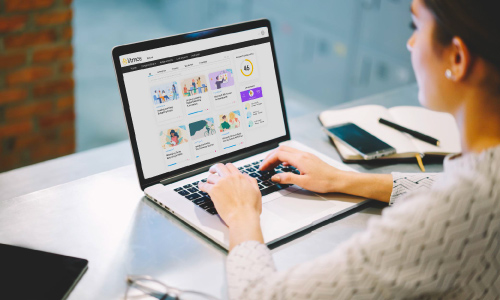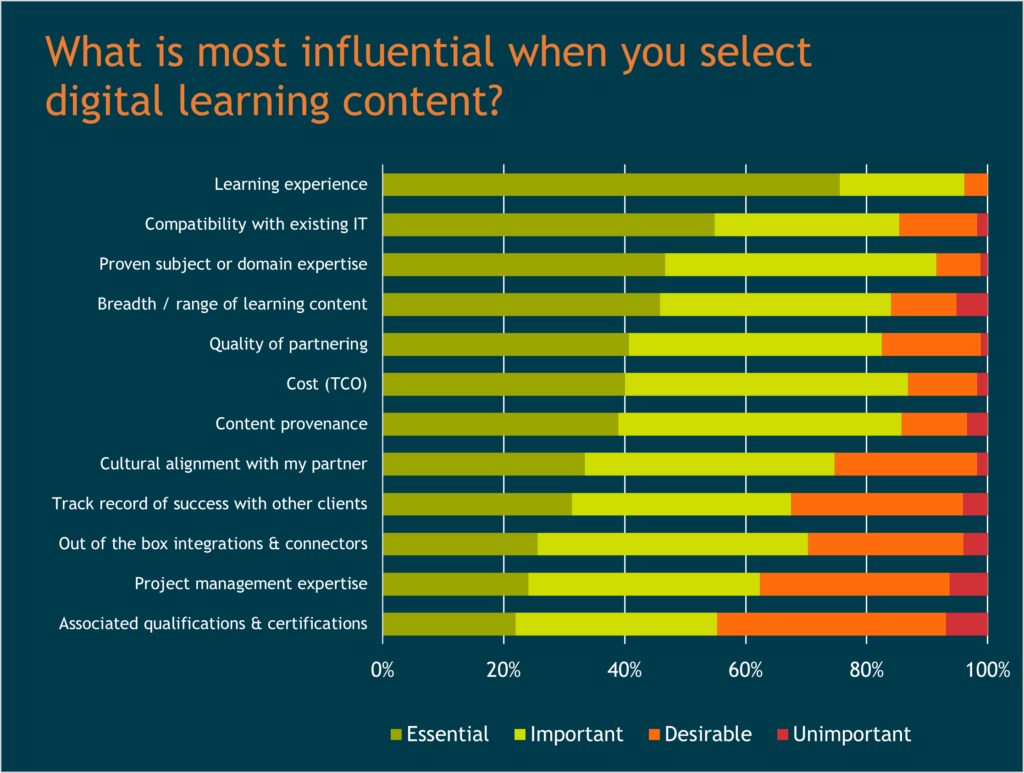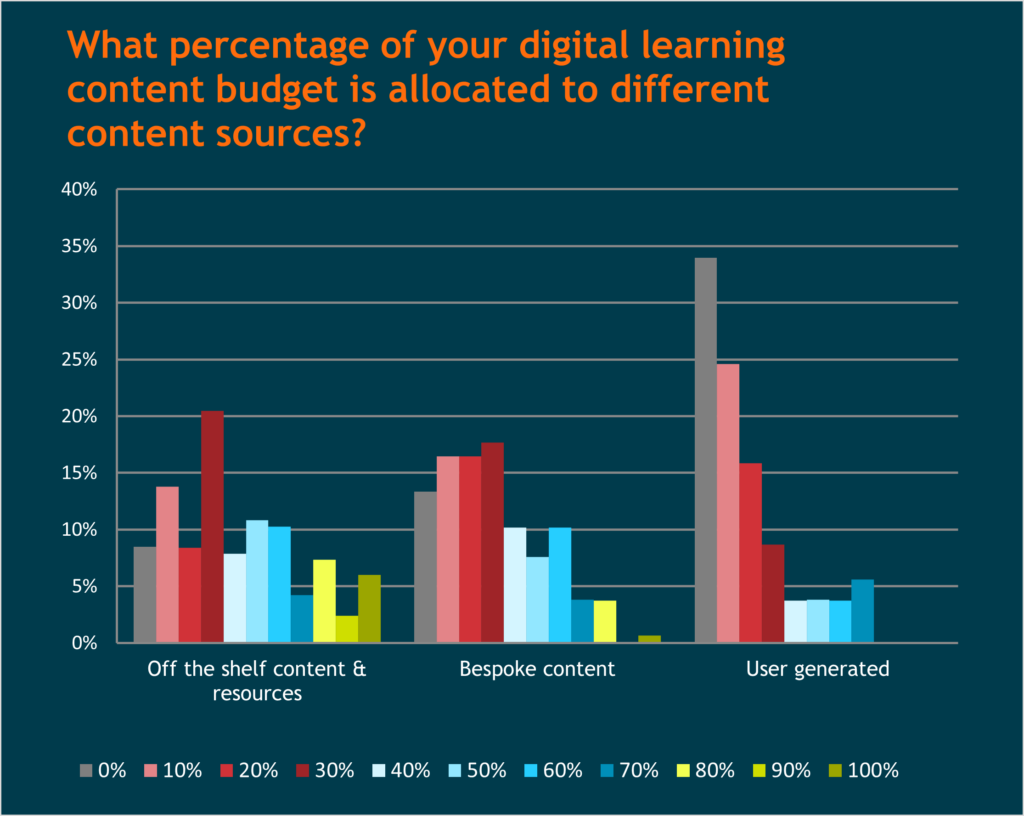What to Look for in Off-the-Shelf Content

So, how can learning teams benefit from using learning content, especially as digital learning content fatigue is increasingly an issue for learners?
Boom time for digital learning
Digital learning has been booming since the pandemic with 63% of organizations expecting to increase their investment in digital learning content in the year ahead. Just to put that into perspective, less than 1% are planning to decrease their digital learning content spend. So, where are buyers spending on learning content?
The key trend here is user-generated content, in which 55% of organizations are expecting to increase investment. Bespoke digital learning content is close behind with just over half expecting to increase their spend over the year ahead. This is followed by off-the-shelf content and resources, with 33% looking to increase their spend.
So, what’s happening? Are people back-pedaling from off-the-shelf content?
In some ways yes, but a look at the percentage of spend focused on-off-the shelf materials shows it dominates the digital learning content market. 41% will spend more than half their digital learning content budget on off-the-shelf materials. That spend drops to 15% for user-generated content, so you can see that off-the-shelf content is a long way from losing its crown. And off-the-shelf content is going to continue to be a significant part of learning content strategies for years to come because of the breadth, depth, and scope of learning it can enable L&D teams to accelerate.
So, the swing to more user-generated and bespoke learning represents a rebalancing and maturing of the market as buyers look to embed digital learning more closely into the things that make their organizations unique.
Digital learning fatigue means we need to be at the top of our game
As well as the continued growth in digital learning, L&D teams can expect to see an evolution across all forms of content. The reason for this is digital learning fatigue. As learners become saturated with online experiences and eLearning, so enthusiasm and engagement can wane. This has become a problem since the pandemic with only 1 in 8 organizations reporting that digital learning fatigue is declining. So we need to invest in effective content if we want to maintain the scale, speed, and reach of learning resources.
What should you be looking for from learning content?
Our research shows that the selection criteria for learning content should focus on the following themes and priorities: learning experience, IT compatibility, proven expertise, breadth of content, quality of partnering and cost. Learning experience is the number one criteria for selecting content, with 96% saying the learning experience is essential or important to selecting content. And rightly so.

Source: Digital Learning Content Strategy Research, Fosway Group
So what is it about the learning content experience that really matters? You can use the following checklist to assess suppliers yourself – or even better – get learners to use the list when they help you assess the learning you are looking to source. You can weight these depending on the context and part of the learning cycle you are looking to support. Not all of them will always be as important as others. And perhaps that’s an important part of your assessment process – to understand what your audience really wants.
Digital Learning Design
- Interactivity
- Structure – Chunking / Modularity
- Pacing / Reinforcement
- Practice
- Wider learning support resources
- Assessment methodology
Digital Learning Navigation
- Simple Navigation & Intuitiveness
- Clarity of iconography
- Consistency of layout
- Progress tracking
- Bite sized durations
Visual Design, Interactivity, and Media
- Media richness
- Clear Layout & Professionalism of appearance
- Appropriateness of media – reality aligned
- Use of Sound
- Gamification
Language Tone and Style
- Journalistic style and Reading Ease
- Aligned to our Brand Tone
It’s more than the content though!
While sourcing quality content is important – so is aligning your content and delivery strategy to your audience and their needs, which is why engaging with your audiences around sourcing content is so important. It’s no good having content that doesn’t help your learners.
More importantly, think about how the content fits into your overall learning culture and how other performance processes support it. Motivation is a critical part of learning so harness motivational triggers including career planning, performance management, and feedback to energize employees through an agile input, action, feedback, and reflection learning cycle which brings learning content to life.
Finally, think hard about how the learning landscape is evolving and the impact of digital learning fatigue. To truly address that we need to think about pushing more adaptive learning – which can raise the efficiency and personalization of learning – as well as more immersive forms of scenario and simulation-led learning. The world of learning content is raising its game – and alongside that make sure you recalibrate your expectations of your learning experiences too.





